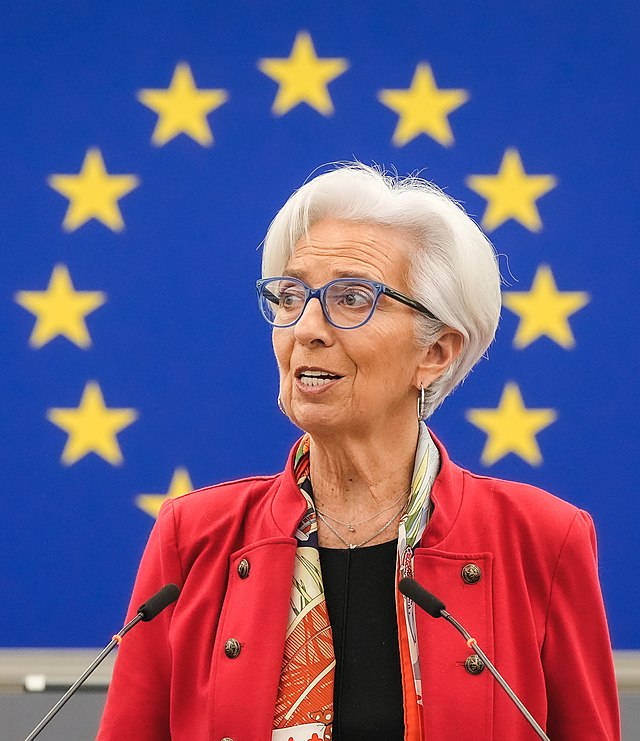The European Central Bank’s Governing Council kept its three key interest rates unchanged on Thursday, signaling confidence that euro area inflation is converging toward its medium-term 2% target while acknowledging a fragile recovery in growth.
The deposit facility rate remains at 2.00%, the main refinancing rate at 2.15%, and the marginal lending facility at 2.40%.
Inflation: At Target, but Caution Remains
According to the ECB’s updated staff projections:
- Headline inflation will average 2.1% in 2025, 1.7% in 2026, and 1.9% in 2027.
- Core inflation (excluding energy and food) is expected to average 2.4% in 2025, 1.9% in 2026, and 1.8% in 2027.
These forecasts are broadly unchanged from June, with policymakers stressing that inflation has now stabilized close to target but remains vulnerable to upside risks from energy volatility and wage dynamics.
Growth: Upward Revision for 2025
The outlook for euro area growth improved modestly:
- 2025 GDP growth is now seen at 1.2%, up from 0.9% in June.
- 2026 growth was revised down slightly to 1.0%.
- 2027 growth remains at 1.3%.
The ECB noted that resilient domestic demand, easing supply bottlenecks, and lower energy prices are supporting the 2025 rebound, although global trade uncertainties and geopolitical risks continue to weigh on the medium-term picture.
Policy Stance: Data-Dependent
President Christine Lagarde and the Governing Council emphasized a meeting-by-meeting, data-dependent approach. Rate decisions will hinge on:
- Incoming economic and financial data,
- The inflation outlook and associated risks,
- The strength of monetary policy transmission across the euro area.
The ECB reiterated it is not pre-committing to a rate path, leaving open the possibility of cuts, hikes, or prolonged stability depending on conditions.
Balance Sheet: APP and PEPP Wind-Down
The ECB confirmed that both its Asset Purchase Programme (APP) and Pandemic Emergency Purchase Programme (PEPP) portfolios are continuing to decline at a predictable pace, with no reinvestment of maturing securities.
The Governing Council also reaffirmed that the Transmission Protection Instrument (TPI) remains available to counter “unwarranted, disorderly market dynamics” that could fragment euro area bond markets and impair monetary policy effectiveness.
Interpretation: A Holding Pattern with Cautious Optimism
Today’s decision reflects the ECB’s delicate balancing act:
- On one side, inflation is now essentially at target, justifying a pause.
- On the other, the Governing Council is wary of loosening too soon, particularly as wage pressures in services and geopolitical shocks could re-ignite price pressures.
- The modest upward revision in growth provides some breathing space, but the longer-term outlook remains subdued.
For markets, the unchanged stance signals monetary stability through year-end, with investors likely to push back expectations for any rate cuts into mid-2026 unless inflation undershoots.
Final Word
By keeping rates steady, the ECB is effectively telling markets and households: mission accomplished, but vigilance remains essential. With inflation tamed for now and growth improving, the euro area enters a new phase of policy stability — though global uncertainties ensure that the Governing Council’s hand will remain firmly on the wheel.





